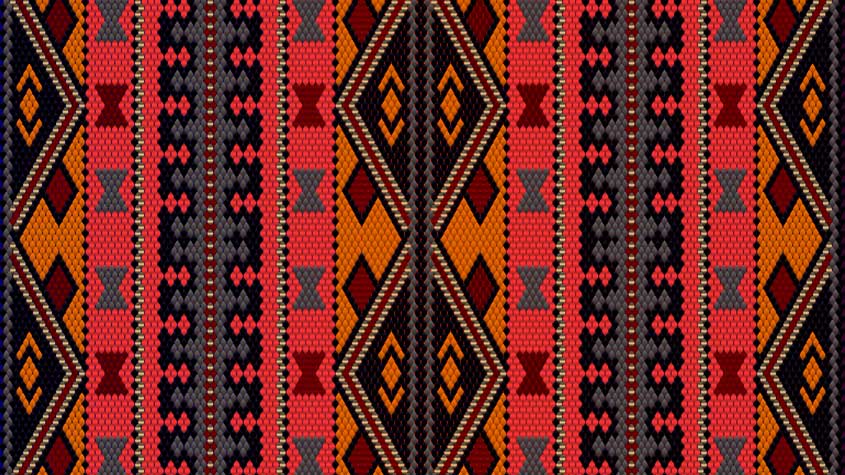Far from being a forgotten tradition, Al Sadu is a centuries-old practice that is perpetuated and reinvented in Arabia.
Historically, Al Sadu met the needs of nomadic life. Women used available resources – sheep’s wool, goat’s and camel’s hair – to create robust textiles, essential for survival in arid environments. Their method, based on rudimentary floor looms, produced tight, durable fabrics characterized by geometric patterns that reflected the environment and culture of their creators.
Al Sadu production begins with shearing the wool and collecting the hair, followed by thorough cleaning to remove impurities. The yarns are then dyed with bright colors derived from local plants and spices, such as henna, turmeric, saffron, aloe and indigo. Weaving is done on traditional looms made from palm or jujube wood.
It also has significant cultural importance, recognised by UNESCO. Kuwaiti Sadu was inscribed on the Representative List of the Intangible Cultural Heritage of Humanity in 2020, in collaboration with Saudi Arabia.
Keeping the art alive
Once the preserve of nomadic tribes, this time-honored art is now being revitalized by young designers. In Kuwait , for example, with the aim of perpetuating this heritage, designers are collaborating with Bayt Al-Sadu and specialist researchers. The aim of this collaboration is to develop unique art exhibitions that showcase this nationally recognised culture.
Bayt Al Sadu, or the House of Sadu, is a museum dedicated to the traditional textiles of Kuwait. It is dedicated to the preservation, documentation and promotion of Bedouin textile heritage, ranging from nomadic weaving to urban weaving styles.
A study conducted by Manal Alkhazi at the University of Southampton among 120 young Kuwaiti women aged between 15 and 21 from the six districts of Kuwait revealed that 48.3% of young Kuwaitis interviewed in an electronic survey had Sadu garments at home. In addition, 69.2% of those questioned said they knew the basic Sadu colors.
source/content: kawa-news.com (headline edited)
_________

______________
ARABIAN ART